Vision For Doing
Although the name suggests that this is a visual assessment, it is so much more. If you read the book ‘Vision for Doing’ you will not only learn a lot about vision, but you will also learn about hearing, touch, taste, smell, and movement.
This is a very multisensory assessment. The authors state that to understand someone’s visual preferences you must understand how they respond to the stimulus with their other senses.
Vision for Doing was first published by Moray House Publications in 1992 and written by Stuart Aitken & Marianna Buultjens.
The book is freely available online and is hosted by the Scottish Sensory Centre.
There is a downloadable PDF version:
http://citeseerx.ist.psu.edu/viewdoc/download?doi=10.1.1.138.5821&rep=rep1&type=pdf
And there is a very good online version of the book on the Scottish Sensory Centre website:
http://www.ssc.education.ed.ac.uk/resources/vi&multi/vfdh/vfdtoc.html
As you may expect in a book of this age, some of the terminology will be a little dated. However, back in the ‘90s and to thousands this book was our Bible. If you do download the book and read it, you will find that Marianna and Stuart were ahead of their time, and you will notice that most assessments we see today have some of their roots in this publication.
The Scottish Sensory Centre has a vast library of books; below is the link to their 400-page catalogue:
http://www.ssc.education.ed.ac.uk/library/catalogue.pdf
‘Vision for doing’ is the term used by the authors for functional vision, but this is not just a visual assessment book because the authors feel that testing vision in isolation with a learner with complex needs and limited communication skills is likely to be ineffective.
Here is an excerpt from chapter one of the book, entitled ‘Assessment and Functional Vision’, which describes why:
“A girl of 14 years who was severely multiply disabled was being tested, accompanied by the specialist teacher for visually impaired and the girl’s mother. Two very experienced FP testers were in attendance (a reliability check on the test can then be made on the spot). After repeated Teller card presentations, the testers gave up, saying that they thought the girl might be able to see light, but no more.
Meanwhile the girl’s teacher and the author, both of whom were out of sight of the girl, exchanged glances. We had both realised immediately that the girl was attempting to communicate through eye pointing. To do so, she had to avoid both grating and grey square. It transpired that the girl had a fairly complex eye coding system established. The moral of this story is that there is no point in testing the sight of multiply disabled people by itself. What is interesting is to test Vision for Doing.”
Aitken, S.C. & Buultjens, M. (1992) Vision for Doing (Sensory Series No 2). Moray House School of Education.
This was one of the first publications to look at the learner in a more holistic manner rather than pointing out obvious sensory deficits in one modality. The authors are more interested in finding out what the learner can do, and what they may have difficulty doing. This is much better than just knowing that a learner has macular degeneration because you find out what this means in practice. For example, it is more useful for you and helpful to the learner if you know that you need to approach them from the side to avoid the startle response. The authors also mention that ‘assessment, rather than being an end in itself, should be a means to an end’.
In the book, Aitken and Buultjens also highlight a learning hierarchy developed by Laura Pease at Whitefield School, London:
Awareness, Attending, Localising, Recognising and Understanding
This model has been copied and modified in many other more recent publications and government documents. It works because it measures what a learner can do, rather than what they can’t do.
Chapter four of the book lists the working principles of ten commandments, which is a valuable guide to working with our learners. Section two of the book goes into more detail about assessment of learners with complex needs. The authors also offer lots of ideas and strategies for sensory investigations.
The assessment is detailed and time consuming. However, once you have read the book and either agreed or disagreed with the principles, you will find yourself armed with a vast amount of knowledge about observation and investigation. The assessment will give you an underpinning knowledge about PMLD learners that will help you decide on the best type of assessment to use with your learner.
Key Points:
Vision for Doing by Stuart Aitken & Marianna Buultjens was first published by Moray House Publications in 1992. The book is freely available online.
Most assessments we see today have some of their roots in this publication.
‘Vision for doing’ is the term used for functional vision, but this is a very multisensory assessment as testing vision in isolation with a learner with complex needs and limited communication skills is likely to be ineffective.
In the book, the authors also highlight a learning hierarchy developed by Laura Pease at Whitefield School, London: ‘Awareness, Attending, Localising, Recognising and Understanding’, which measures what a learner can do, rather than what they can’t do.
The assessment is detailed and time consuming. However, this book provides a vast amount of knowledge about observation and investigation when working with PMLD learners.
Reflective Practice:
How do you currently assess the vision of learners with complex learning needs?
In what ways could you make this more multisensory?
Read the full publication here: http://citeseerx.ist.psu.edu/viewdoc/download?doi=10.1.1.138.5821&rep=rep1&type=pdf
Richard Hirstwood – September 2021




